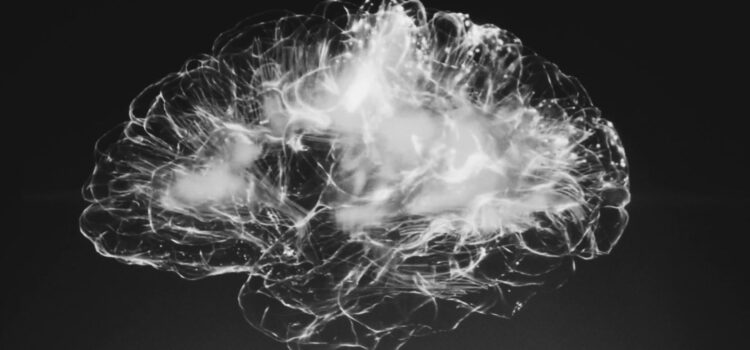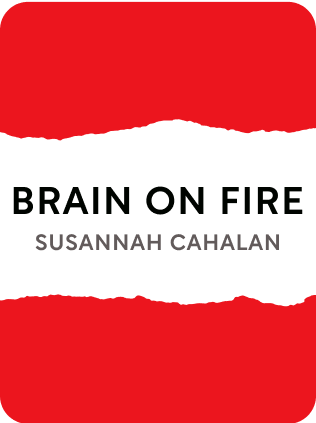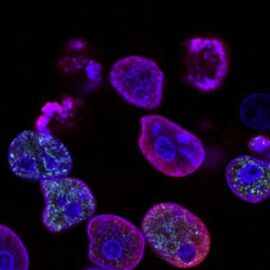

This article is an excerpt from the Shortform summary of "Brain On Fire" by Susannah Cahalan. Shortform has the world's best summaries of books you should be reading.
Like this article? Sign up for a free trial here .
Is Brain on Fire a true story? How did Susannah Cahalan write the Brain on Fire real story?
Brain on Fire is a true story. Susannah Cahalan suffered seizures, hallucinations, paranoia, and more without doctors able to diagnose her for a month.
See what happened in the Brain on Fire true story.
Writing the Brain on Fire True Story
Susannah doesn’t remember her time in the hospital and needs to do research for the Brain on Fire true story. She and two colleagues from work attend a lecture Dr. Najjar is giving on anti-NMDA-receptor encephalitis. In the lecture, he uses Susannah as a case study. Though he never cites Susannah’s name, her colleagues recognize that the lecture is about Susannah.
Assignment to Write
That afternoon, the Post’s Sunday editor asks Susannah if she’d be willing to write the Brain on Fire true story as a first-person account of her illness. It’s the assignment Susannah has been hoping for.
She has four days to write the story. She interviews Stephen, her family, and Drs. Najjar and Dalmau. She learns many things in the course of her research:
- Children make up 40 percent of those diagnosed with the disease. Their symptoms include temper tantrums, violence, oversexuality, and mutism. They may start speaking in tongues or repeating other people’s words. Their behavior is frequently misdiagnosed as autism. Formerly, it was described as evil, and exorcism was prescribed as the cure.
- Many adults diagnosed with the disease were originally diagnosed with schizophrenia or autism. A small number of doctors, including Dr. Najjar, are currently researching the link between schizophrenia, autism, and autoimmune disease. (Shortform note: In 2018, Dr. Najjar suggested the term “autoimmune psychosis” to designate a subset of diseases in which autoimmune disorders masquerade as psychosis. See Najjar’s recent research published in the Journal of Neuroinflammation.)
- It’s cost-prohibitive to test all psychiatric patients for an autoimmune disease. Susannah was lucky; she had a financial safety net that allowed for expensive testing. Many people with lifelong psychiatric conditions don’t have that kind of safety net and may remain incorrectly diagnosed their entire lives.
- Many doctors don’t keep abreast of current medical research. While writing her article, Susannah reached out to Dr. Bailey, the neurologist who had declared Susannah an alcoholic. She was shocked to find that he had never heard of anti-NMDA-receptor encephalitis, even though her case had recently been covered in every major medical journal, the New England Journal of Medicine, and the New York Times.
Illustrating the Brain on Fire Real Story
To illustrate Susannah’s article, the photo editor wants to run images from the EEG videos taken during Susannah’s hospital stay. When Susannah sees herself onscreen, she shudders. There she is on camera, staring into the lens, her hair dirty, her hospital gown slipping off her shoulder. Her eyes blaze with manic fear, as if she’s staring into the face of death. She mouths a single word: “Please.”
Is Brain on Fire a true story? Susannah doesn’t even remember her time. Susannah is frightened by seeing herself so unhinged. What frightens her more, though, is the fact that emotions that once wracked her so completely have vanished entirely. The Susannah in the EEG video is a foreign entity to the Susannah writing about her own illness.
On October 4, Susannah’s article runs in the Post. She receives hundreds of emails from people who have the disease and want to know more about it. They don’t ask, “Is Brain on Fire a true story?” She receives phone calls from people who want a diagnosis from Susannah herself. Acknowledging how lucky she is to have recovered, Susannah is overwhelmed by survivor’s guilt. One man, whose wife is ill, calls Susannah and aggressively challenges, “Why did you get better while my wife’s still sick? Are you so sure you won’t get sick again?” Two weeks later, he calls back to tell Susannah that his wife is dead.
Yet Susannah receives other types of phone calls. One comes from Bill Gavigan, whose daughter fell ill and was routinely misdiagnosed for more than a year. The girl was saved only because Bill’s sister sent him a video of Susannah talking about the disease on the Today show, along with Susannah’s article in the Post. Bill gave the video and the article to his daughter’s neurologist, who immediately agreed to test Bill’s daughter for anti-NMDA-receptor encephalitis. The girl was diagnosed and treated by Dr. Dalmau’s colleagues. She made a complete recovery. On the phone, Bill tells Susannah, “Without you, our daughter would be dead.”
The Brain on Fire real story is translated into Arabic and published in multiple papers throughout the Middle East. Syria’s news agency publishes numerous stories of the Syrian boy who’d become a miracle doctor in the US. The Syrian ambassador to the UN congratulates Najjar personally. That same year, Najjar is designated one of the best neurologists in the US by New York Magazine.
Susannah returns to the Post full-time. She and Stephen move in together. In a few months, she feels comfortable in her own skin again. There’s no longer a gap between what she feels inside and how other people see her. She doesn’t struggle for words anymore. She feels in control. Most importantly, she’s regained her old sense of humor.

———End of Preview———
Like what you just read? Read the rest of the world's best summary of Susannah Cahalan's "Brain On Fire" at Shortform .
Here's what you'll find in our full Brain On Fire summary :
- How a high-functioning reporter became virtually disabled within a matter of weeks
- How the author Cahalan recovered through a lengthy process and pieced together what happened to her
- How Cahalan's sickness reveals the many failures of the US healthcare system






